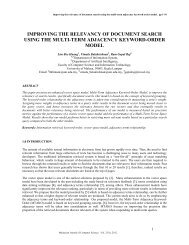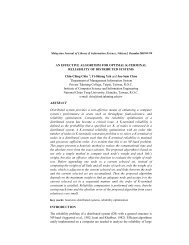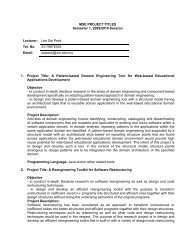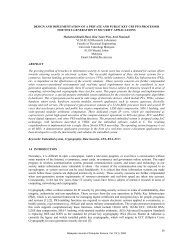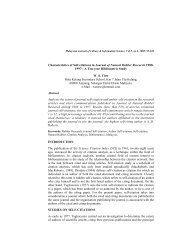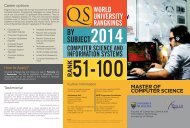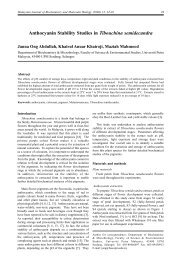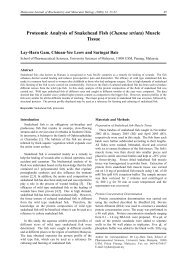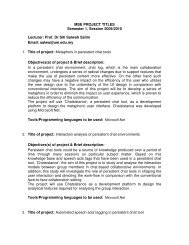Download1 - EJUM
Download1 - EJUM
Download1 - EJUM
You also want an ePaper? Increase the reach of your titles
YUMPU automatically turns print PDFs into web optimized ePapers that Google loves.
Babalhavaeji, F. & Jafarzadeh Kermani, Z.Table 3: Group StatisticsKnowledgesharingbehaviourType of universityN Mean Std.DeviationStd. ErrorMeanGovernment universities 59 2.0236 .80190 .10440Islamic Azad University 32 2.0960 .84598 .14955Table 4: Independent Sample T-testKnowledgesharingbehaviourLevene's Testfor Equality ofVariancest-test for Equality of MeansF Sig. t dfSig. (2-tailed)Equal variances assumed .159 .691 -.404 89 .687Equal variances notassumed-.397 60.852 .693Teaching Members’ Teaching Experiences and Knowledge Sharing BehaviourThe second research question explored the influence of faculty members' teachingexperience on knowledge sharing behaviour. A one-way ANOVA was used for this purpose.Result in Table 5 shows that there is a significant difference between knowledge sharingbehaviour of faculty members with different teaching experience (p-value 0.027>0.05).Table 5: ANOVA AnalysisSum of Squares df Mean Square F Sig.Between Groups 6.910 4 1.727 2.876 .027Within Groups 52.849 88 .601Total 59.759 92Using Duncan's range test has helped to show that the group of faculty members withspecific experience indicated higher knowledge sharing behaviour. No significantdifference was observed within groups but significant difference was indicated betweengroups with regard to knowledge sharing (Table 6). The results show that faculty memberswith more than 20 years experience and those with less than 5 years experience (group 2)reflect higher degree of knowledge sharing behaviour.Table 6: Duncan's Range TestTeaching experience(in years)NSubset for alpha = .051 216-20 17 1.78935-10 27 1.882611-15 16 1.8858More than 20 14 2.3168Less than 5 19 2.4836Sig. .067 .524Page | 8



